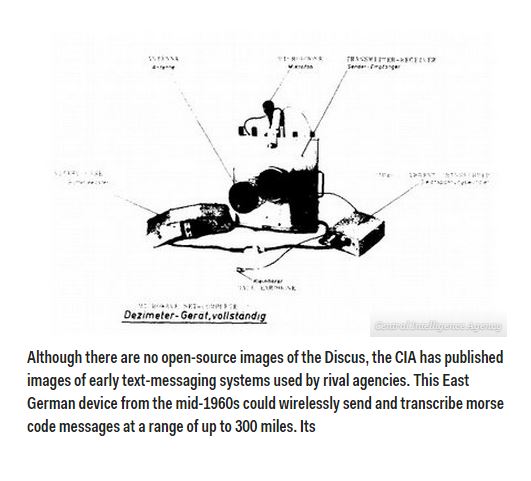Espionage is a dirty business. Agencies like the CIA, FBI, NSA and others around the world are in the business of knowing everyone’s business. In order to do that job, these agencies have to be on the cusp of technology as far out as they can possibly go. So it’s no surprise to hear that the CIA was developing a form of text messaging as early as the 1960’s with feasible results in the 1970’s.

Business Insider reports that the CIA was developing hand-held communications with non-contact messaging ability. Reportedly the agency felt this method would be safer as the agents whom were sharing information did not have to meet face-to-face. The agency dubbed the system SARC (Short-Range Agent Communications). SARC also eliminated the need to leave classified information and data at “dead-drops” where they could be intercepted or mistakenly taken. It could also keep agents separated further eliminating the need for “brush passes” often used in high traffic public areas. The way SARC worked was the agents passed along the information (over a short distance) in text form using radio frequencies that were harder to intercept than frequencies over a long distance.
Buster, an early version of SRAC, had “two portable base stations — each about the size of a shoe box — and one agent unit that could be concealed in a coat pocket,” Hoffman writes. “With a tiny keyboard one and a half inches square, the agent would first convert a text message into a cipher code, then peck the code into the keypad. Once the data were loaded — Buster could hold 1500 characters — the agent would go somewhere within a thousand feet of the base station and press a ‘send’ button.”
While this early (Buster) 60’s version worked, it wasn’t until the late 70’s that the CIA improved on the idea and deployed the Discus. The Discus eliminated the need for bulky units and could transmit further distances than Buster. The keyboard was a bit larger and the terminals fit into the agents coat pockets. Even more important to the agency was Discus’s ability to encrypt the data automatically so that agents didn’t have to use cipher code.
But there were a few drawbacks. In order to send and receive a message, both users had to remain still. A user would know that a message had arrived when a red light flashed on the device, but had to remain in place until they were positive it had been received. On top of that, even something as basic as checking for a flashing light on a concealed piece of complex electronics could give an operative away in a city swarming with counter-intelligence agents.
While the world of spies and espionage is a dark one steeped in mystery and intrigue. It has been one of the largest producers of consumer technology in the world. I can’t imagine what these agencies have going on behind closed doors even as I type this. One can only speculate and wait for the next de-classified batch of documents in 40 years.
What do you think of the CIA’s early text messaging capabilities? Let us know in the comments below or on Google+, Facebook and Twitter.
[button link=”http://www.businessinsider.com/the-cia-secret-cell-phone-precursor-2015-7?r=UK&IR=T” icon=”fa-external-link” side=”left” target=”blank” color=”285b5e” textcolor=”ffffff”]Source: Business Insider[/button]Last Updated on November 27, 2018.










